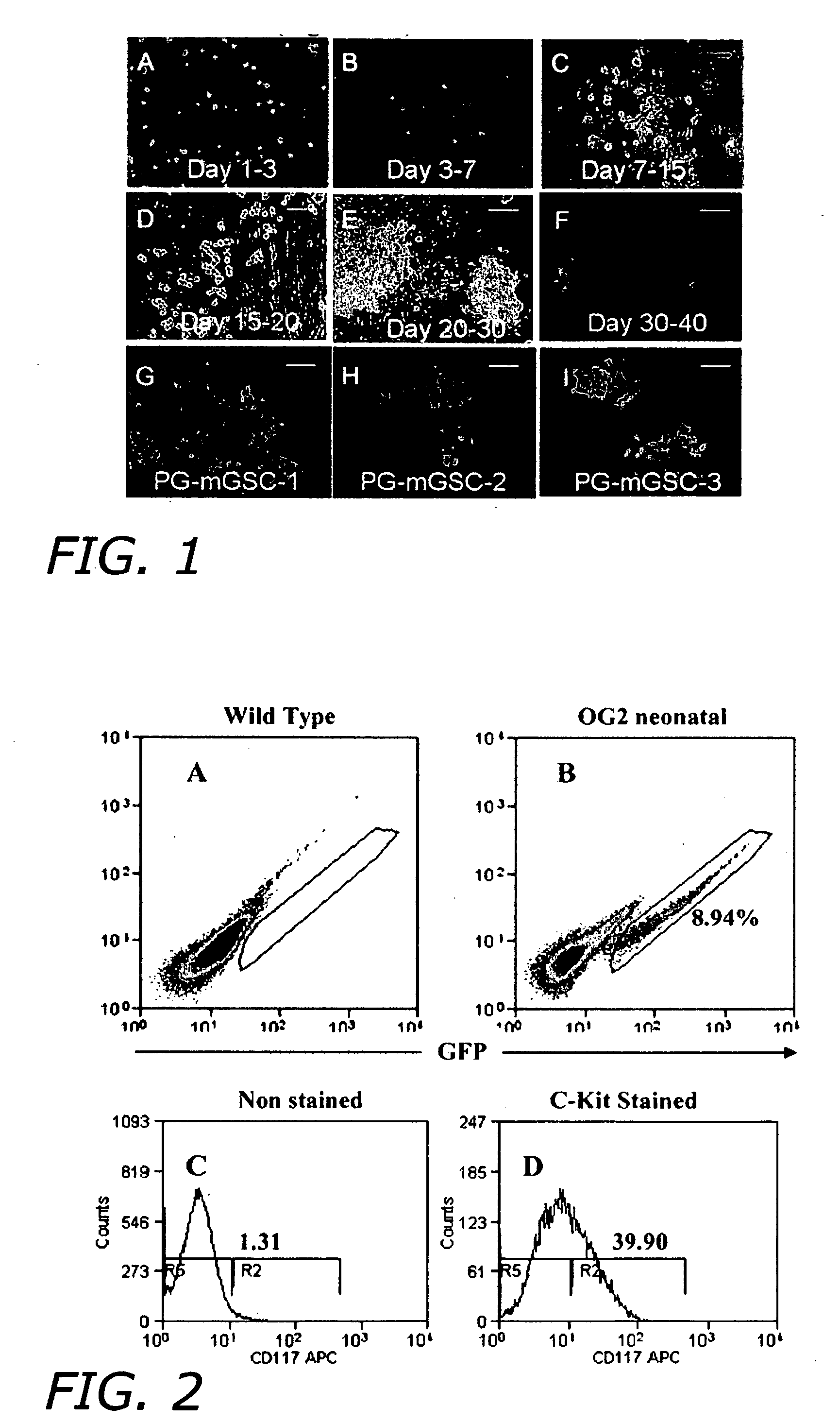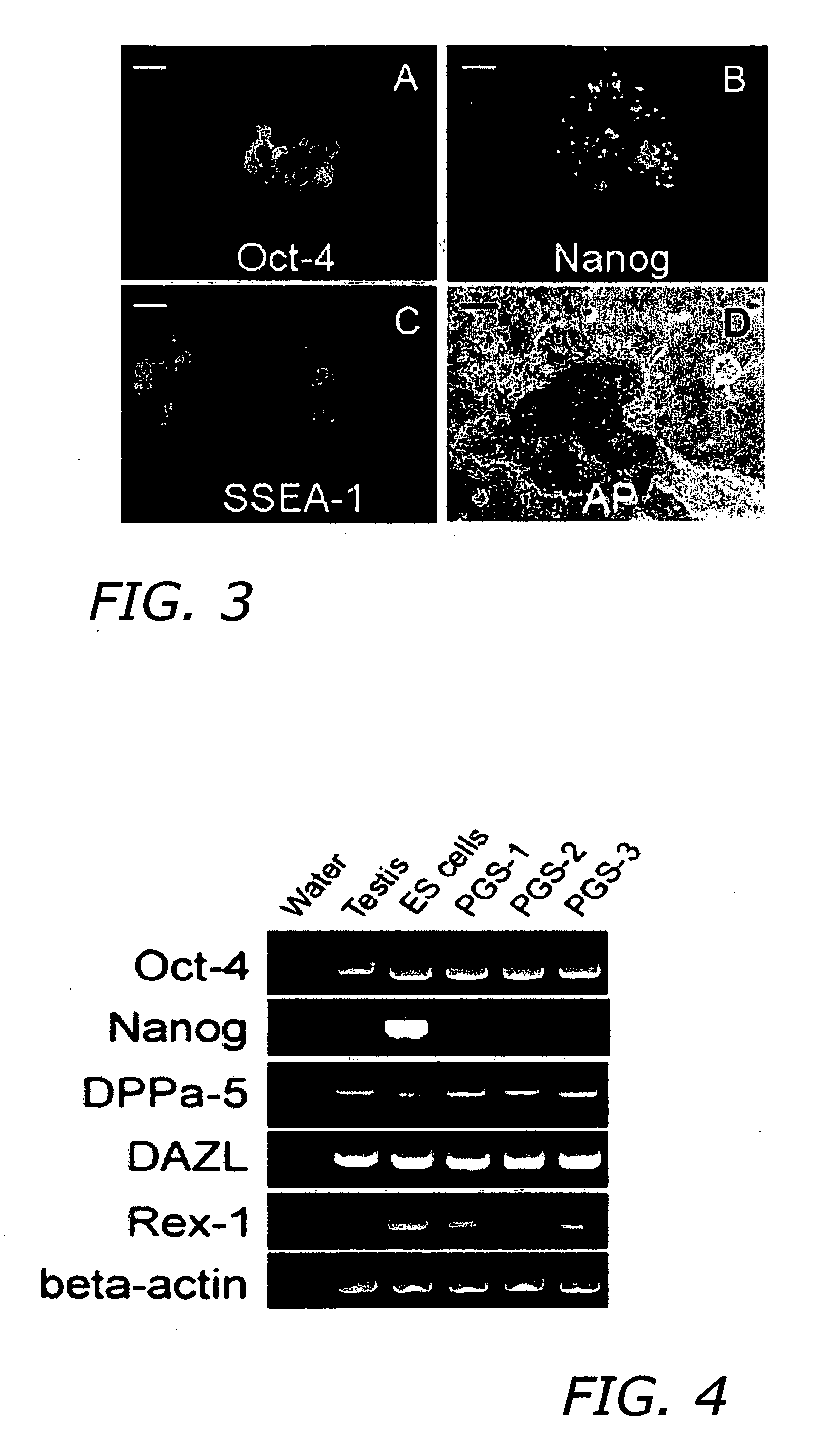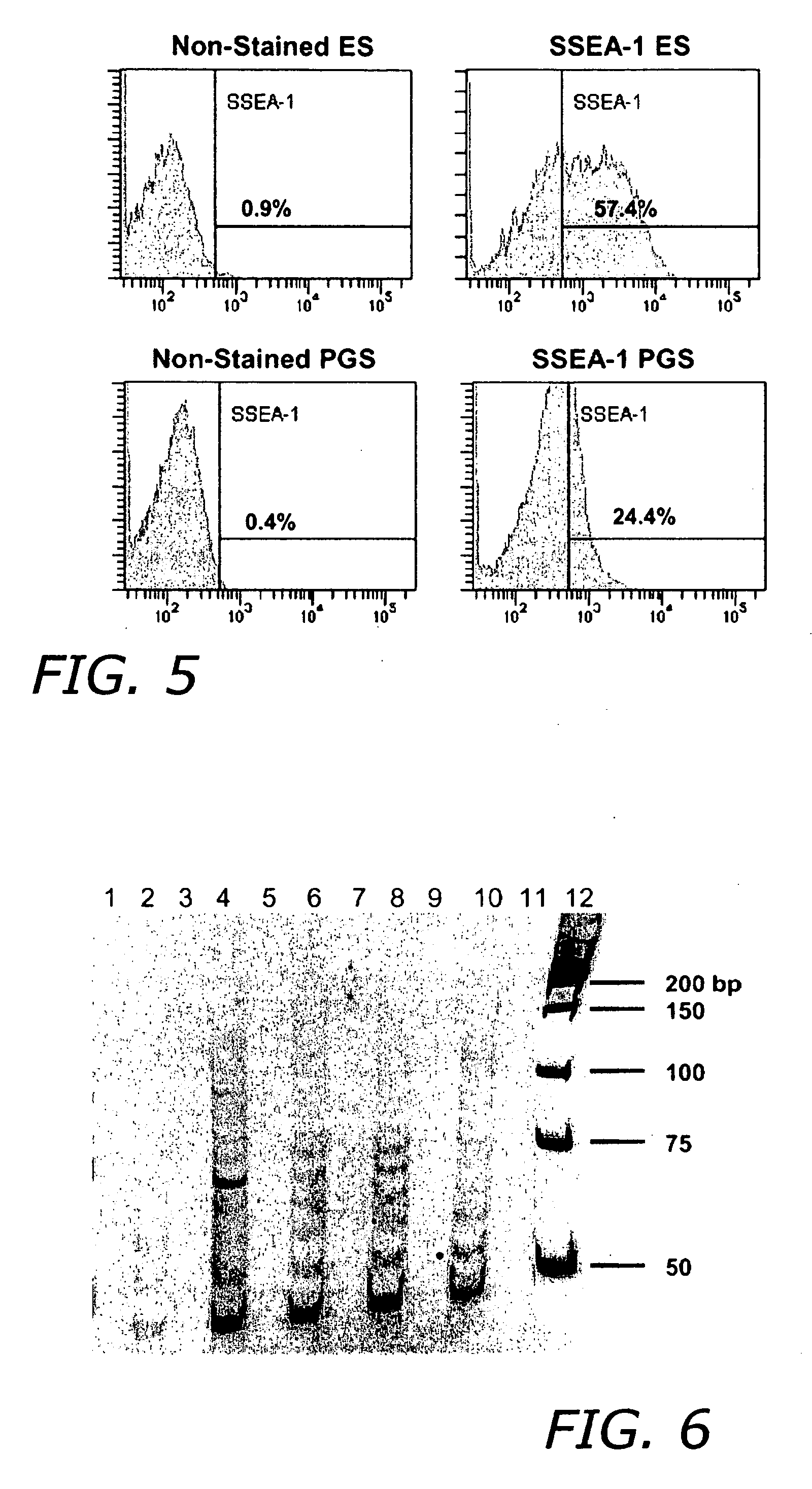Therapeutic reprogramming of germ line stem cells
a germ line stem cell and reprogramming technology, applied in the field of therapeutically reprogrammed cells, can solve the problems of reducing cell differentiation ability or induced apoptosis, slowed the progress of stem cell research using embryonic stem cells, and limited types in number
- Summary
- Abstract
- Description
- Claims
- Application Information
AI Technical Summary
Benefits of technology
Problems solved by technology
Method used
Image
Examples
example 1
Isolation of Primordial Sex Cells from Murine Testes
[0131] Testes can be isolated from pre-natal, embryonic, post-natal and adult testes using the following methods and additional methods known to persons of ordinary skill in the art.
[0132] Male germ stem cells were isolated from 0- to 3-day old OG2 male gonads. Transgenic OG2 mice express green fluorescent protein (GFP). Approximately thirty pups were used in each trial (totally 25 trials). After mincing, testes were digested in DPBS containing collagenase (lmg / ml), DNAse-1 (1 μg / ml) and EDTA (5 mM). Testicular cell culture was performed according to methods well known to persons skilled in the art. In brief, cells were allocated in gelatin-coated (0.1%) culture dishes. The next day, floating cells were collected and passed to a secondary culture plate (1×105 cells per 1.2 cm2) in PM-1 medium containing mouse EGF (R&D Systems, Minneapolis), human bFGF (R&D), ESGRO (murine leukemia inhibitory factor, Chemicon) and recombinant GDNF...
example 2
Isolation of Primordial Sex Cells from Ovaries
[0134] The animal is anesthetized and the ovaries are removed. Alternatively, primordial sex cells (PSCs) can be isolated from a punch biopsy the ovaries. The PSCs are then isolated with the assistance of a microscope. Primordial sex cells have stem cell morphology (i.e. large, round and smooth) and are mechanically retrieved from the ovaries.
example 3
Therapeutic Reprogramming of Germ-Line Stem Cells into Therapeutic Cells
[0135] Primordial sex cells were isolated as described in Example 1. The cells were then plated out at a density of 200,000 cells / 3.8 cm2 in PM-1 medium and then incubated overnight at 37° C. for differential adhesion which separates somatic cells (attached) from germ line stem cells, spermatogonial stem cells and / or primordial sex cells (suspended). This day was designated Day 0.
[0136] StemPro®-34 Complete Medium (Invitrogen Corporation, Carlsbad, Calif.) is comprised of StemPro®-34 Serum Free Medium (SFM) and StemPro®-34 Nutrient Supplement and disclosed in U.S. Pat. No. 6,733,746 B2, the contents of which are herein incorporated by reference in their entirety, particularly Tables 1, 2 and 3 in columns 17-18. For the purposes of this disclosure, StemPro®-34 Complete Medium will be referred to as Stem Cell Basal Medium. Tables 2 and 3, which list the components of the StemPro-34 Complete Medium used in the ce...
PUM
| Property | Measurement | Unit |
|---|---|---|
| Fraction | aaaaa | aaaaa |
| Fraction | aaaaa | aaaaa |
| Concentration | aaaaa | aaaaa |
Abstract
Description
Claims
Application Information
 Login to View More
Login to View More - R&D
- Intellectual Property
- Life Sciences
- Materials
- Tech Scout
- Unparalleled Data Quality
- Higher Quality Content
- 60% Fewer Hallucinations
Browse by: Latest US Patents, China's latest patents, Technical Efficacy Thesaurus, Application Domain, Technology Topic, Popular Technical Reports.
© 2025 PatSnap. All rights reserved.Legal|Privacy policy|Modern Slavery Act Transparency Statement|Sitemap|About US| Contact US: help@patsnap.com



